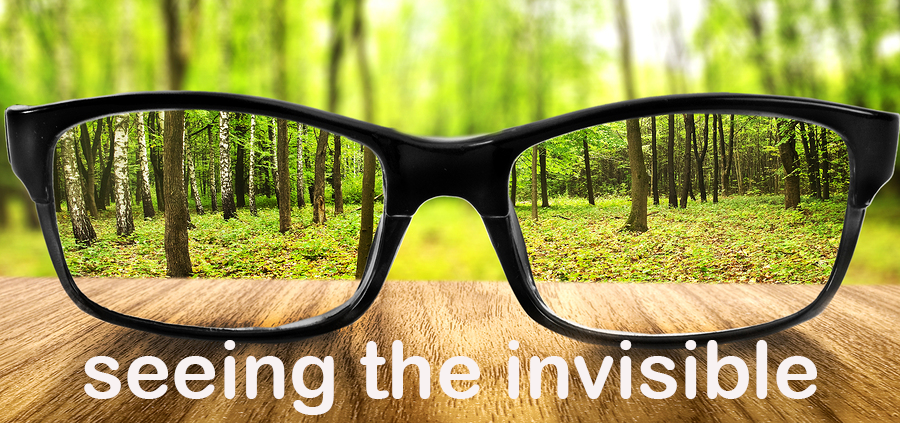The Art of Seeing the Invisible – Part 1
by Sid Raisch

“Vision is the art of seeing what is invisible to others.” ~ Jonathan Swift
NOTE: I have something significantly important to tell you, and if you are in too much of a hurry to read all of this now, please skip down to Case in Point #2. On the other hand, if you realize you need a mental thinking through of the realities of the day carry on from here.
You may not have noticed but I’ve taken a sabbatical of sorts from writing articles for the past few months. This was my invisibility playing out as you’ll read now. It’s isn’t that I’ve had nothing to write about, or time to do it. It’s undoubtedly COVID Fatigue, a psychological effect that some people of the contrarian nature are starting to doubt as being real. Do you know, denial is a rather poor coping mechanism? The struggles are real, and are masked in our industry by the irrational jubilation of being flush with cash, having plenty of work or orders to fill, and time to pontificate in unreality. Deny it or not, the effect is still there.
One of the unintended consequences of the jubilation of record-breaking days, weeks, months and a legendary year to remember forever is the elasticity of lesser efforts going undetected because excess cash distracts us from the, relatively speaking, lack of more intelligent efforts. A word to the wise – be careful how you spend the windfall, and more careful how you invest it.
Case in Point #1 - Some companies are marketing irrationally as if they need to sell name brand and commodity plants cheap to grab market share. I see their email. Meanwhile, some very smart others are removing (greater) profit sucking incentives, increasing prices to match the consumers newfound sense of perceived value of plants, and also gaining an even greater share of the most profitable part of the market, which will stay with them in the future and for the right and best reasons. They’ll also be more profitable than the others, and if they invest those profits wisely will gain balance sheet strength and resiliency for the future.
Case in Point #2 - Some companies are focused on, and frustrated by the shortages of product while others are focused even more intently on the customer in front of them. The numbers have proven that over 70% of customers buy what they like when they see it, not what they came for. Plants are a mystery to our once-a-year spring fever feeding customers, and they truly don’t know what they bought in the past, what they want, or even what’s possible until they see it in front of them. If we wisely put it in front of them before they arrive, they may become predisposed to buy that, and if we don’t they’ll be captivated by whatever is blooming just like they always have. In other words, focus on selling what you can get, and worry less about whether you are getting what you want to sell. “Selling is helping people buy what you have to sell, not being paralyzed by not having what you want to sell.”
Case in Point #3 – Comic Relief from COVID - I get a break with comedy from a variety of sources, and find it laughable the irony of some of the things we’re seeing in everyday life. Some people are laughing at the irony, and some are laughing with it. Laugh with it. Some get offended that I laugh with the situations, and I laugh about that.
Customers who ask dumb questions, say stupid things, and make laughable errors are not to be taken lightly, but are to be taken constructively. What a privilege we have to help these souls, (that’s right, souls) – people who are lightening their load with plants, to find the joy they seek without being the object of our ridicule. Even if they don’t hear us, it is damaging to our own souls. Yes, we can and should be light about the situations but also need to be compassionate and constructive to help them to the best of our abilities find what they’re. looking for, especially the unrealized need for mental improvement.
Our industry went through a similar BOOM-TIME as this starting in the mid to late 70’s when the economy overall sucked wind but our industry boomed like never before. People sought relief from the pressures of the 18 percent mortgage rate and 24 percent car loan by surrounding themselves with flowers. Looking back, that’s where the trend toward color, color, and more color in our industry began. Then they started with Wandering Jew and Swedish Ivy in macrame planters, and other houseplants, then turned to vegetables, then annuals and flowering trees and shrubs. We soothed souls again following the tragedy of 9-11 and rose even higher until economic tragedy struck in 2008. What a great ride that was. Even then our industry weathered better than average retail as people continued to find color the bright spot in their lives.
Tragedy has stricken again with COVID, and here we are again, relieving our fellow souls with plants, beginning again with houseplants. It’s a near miracle (all things considered), and we need to treat it as such, but with a light heart because people need to find us for the plants and also for the fun and joy throughout the process, especially in our stores. Make it a fun day every day for customers, associates, and yourself. EVERYONE should feel better once they arrive, and even better as they leave with an investment in plants to improve their mental state of health.
All along, plants have really been all about mental health and I believe that is the new level of Perceived Value people are finding, and a bit of self-actualization from our industry. Don’t waste the opportunity, privilege and responsibility. This is our time in the Sun. Enjoy it to your fullest ability.
Make Luck – Luck is When Preparation Meets Opportunity – PREPARE NOW by adopting the new rules and build your future with them. Text, call email or Message. I can help.
Want help?


Want Help? I’m here for you. Text or call now while you are in the mood to Raise the Bar by becoming Exceptionally Exceptional.
Sid Raisch
Cell: 937-302-0423
[email protected]
Sid Raisch is a leading consultant for business growth, change, and results throughout the US for over 40 years. He is a consultant to The Garden Center Group and has helped transform both national and local businesses in horticulture into valuable assets with programs that create change in culture, community and company.
REMEMBER: Your interaction (by phone and email) with Group Service Providers such as Sid Raisch, Steve Bailey, Tim Quebedeaux, Robert Hendrickson, Jean Seawright, and John Kennedy are included in your retainer!
